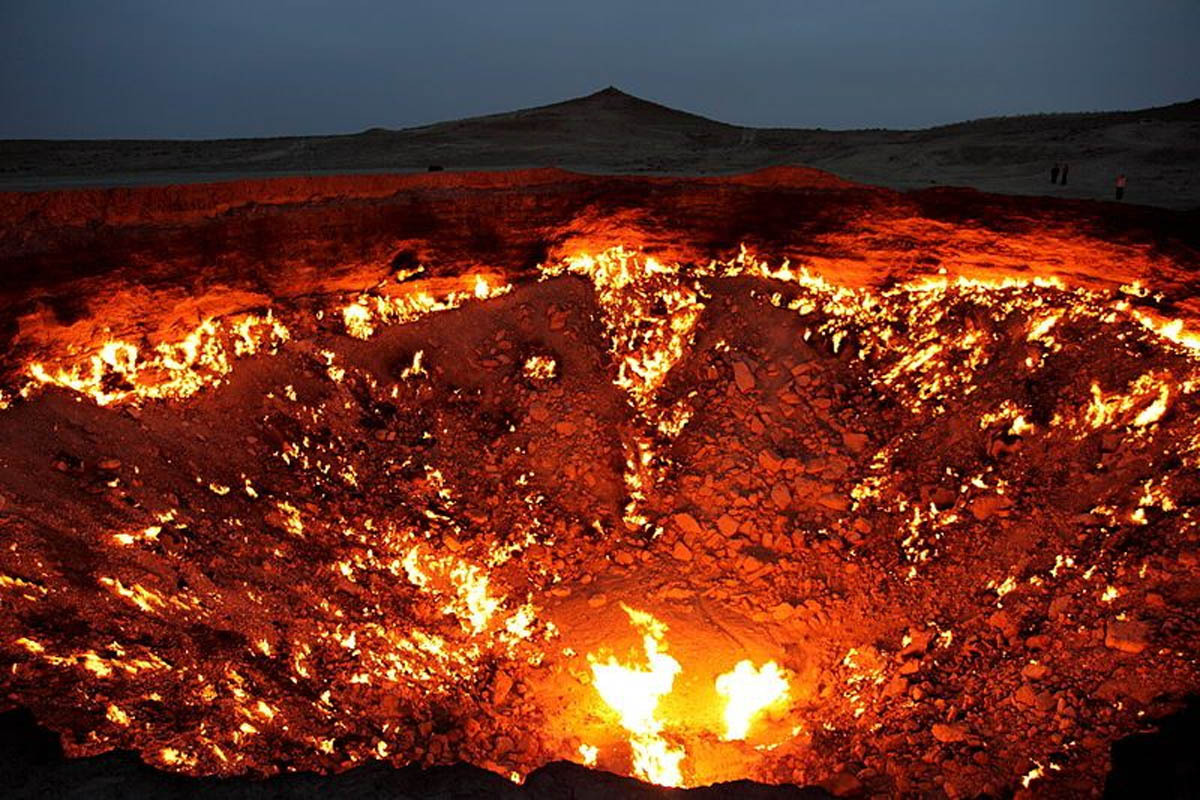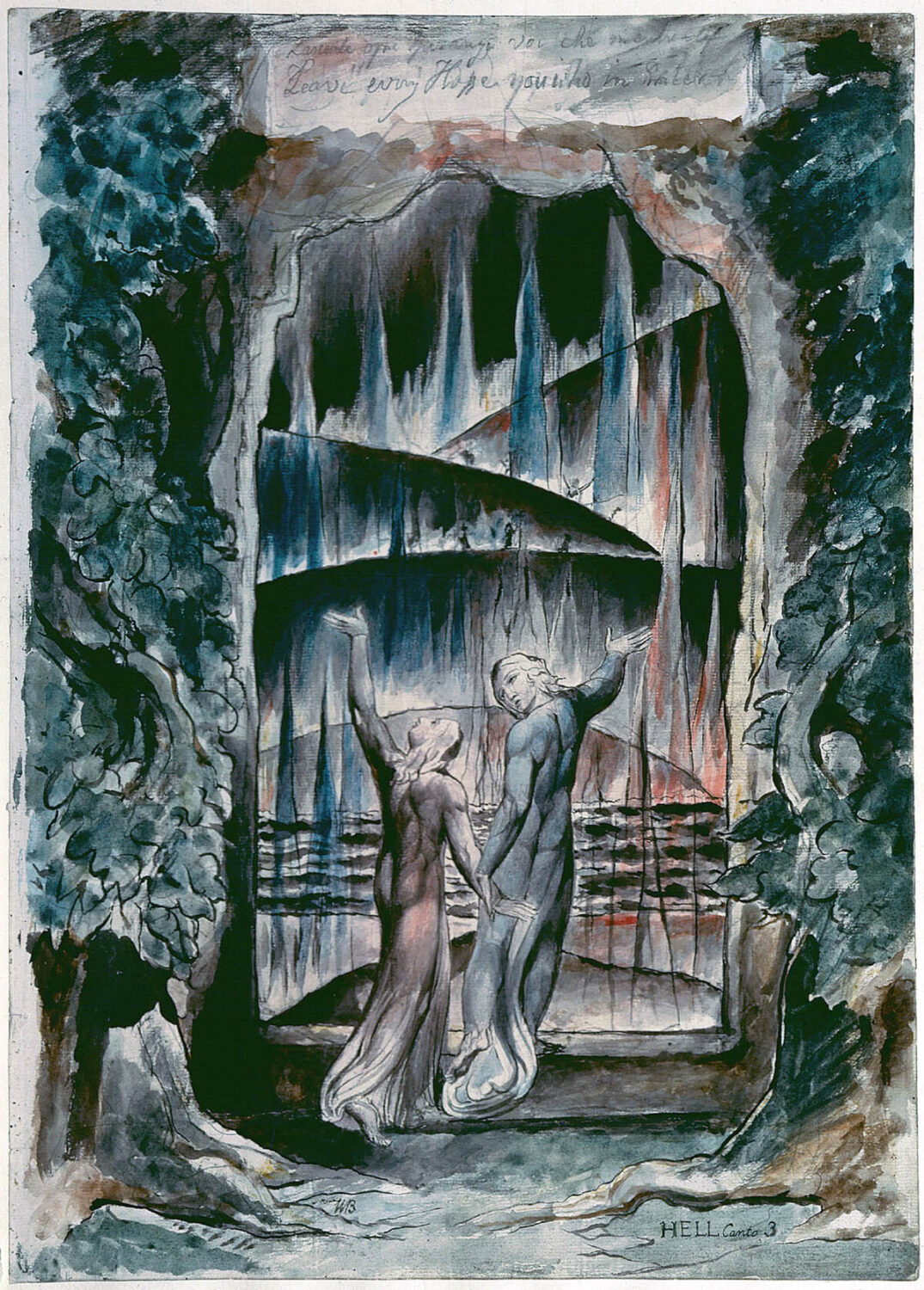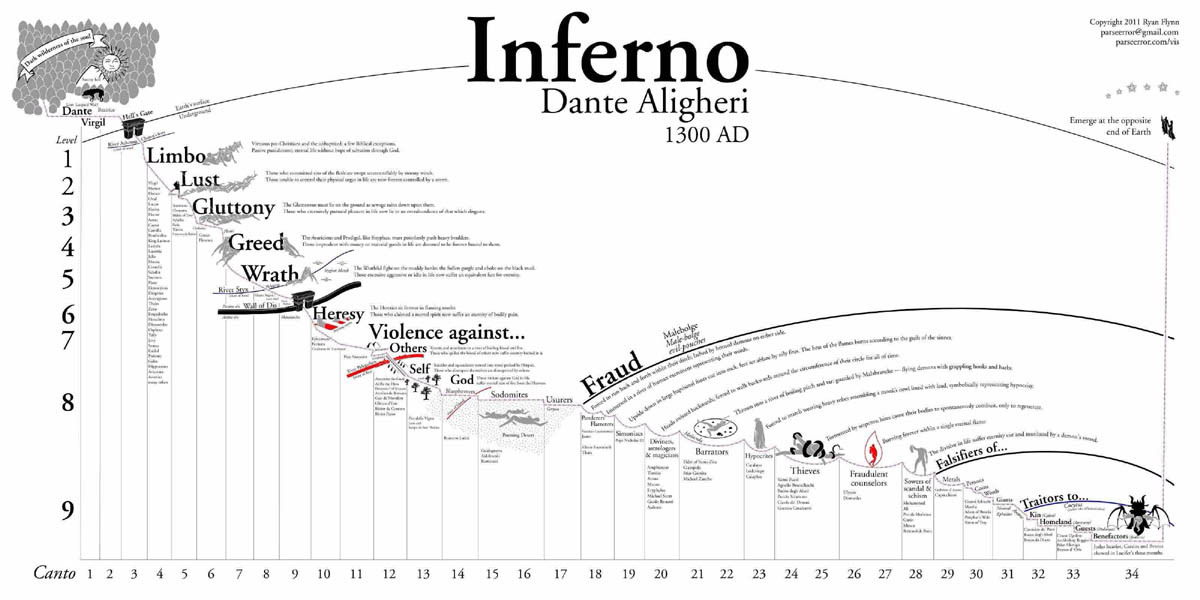
Led by Virgil, Dante sets out on his journey. At the entrance to hell he sees these words inscribed over a dark gateway:

The famous line here is the last, wryly quoted today in many a workplace and home. The absence of hope is the defining feature of hell, as anyone stuck in a dead-end job or a loveless marriage will tell you. The souls the poets will meet here have nothing to look forward to but an eternity of pain, made all the more painful by their remembrance of better times during their lives on earth. Whereas Dante and Virgil will pass through, the damned are for ever stuck in the circle where they are punished, each punishment fitting the crime and reflecting the choices they made in life. Dante invented and perfected the art of contrapasso – the idea that sinners are punished by a process that either resembles or contrasts with the sin itself.

It may come as a surprise to read that hell is made by primal love. How could a benevolent God wish torture on his creatures? The answer, as we shall see, is that the souls here have chosen their fates: it is not God’s will that is reflected in their punishment, but the sinners’ own. Each sinner is different, but what they have in common is that they have “lost the good of the intellect”, as Virgil puts it – their power to reason and to act in accordance with reason. Their will stops at the sinful act itself, without regard for its consequences.
Dante conceives hell as a hollow cone of nine concentric circles, each smaller than the last, tapering to the point at the centre of the earth and the universe where matter is densest and Satan dwells, “the guilty worm that pierces the world”. Satan is the fallen angel Lucifer, who thought himself an equal to God and was cast out of heaven for the sin of pride: the belief that one has power in and of oneself, that one is separate from the all-encompassing divine essence. The fall of Satan displaced the earth under Jerusalem, in the northern hemisphere, where the opening of hell was traditionally located. Now he lies at the bottom of the cone, trapped in ice, beating his wings in a vain attempt to fly back up to heaven.
Thus, at the heart of Dante’s world model there lies a monstrous yet beautiful irony: from the flapping of Satan’s wings proceeds the wind that keeps the ice frozen in which he is trapped. If he were to give up, to surrender to God, the ice would melt and he would be free to regain his heavenly place. This is the ultimate contrapasso: the punishment doesn’t merely fit the crime; it is the crime.
Thus far Dante draws heavily on tradition in all three monotheistic faiths – Judaism, Christianity and Islam – as well as on depictions of the underworld in ancient Roman and Greek literature and philosophy. But in a tweak to the model that is uniquely Dantesque, the fall of Lucifer does something else besides hollowing out the earth to make hell: it pushes up the mountain island of purgatory. Dante depicts purgatory, crowned by the earthly paradise, as the only land mass in the southern hemisphere, “the unpeopled world that lies behind the sun”, as he calls it. A hidden passage – a dark crevice in the rocks, leading from the centre of the earth up towards the surface – connects the two realms. This is the beauty of Dante’s model: the creation of hell co-creates the possibility of redemption. And the two are connected such that, in this life, you need not be stuck but can move between the two states.
The plan of hell (see below) is largely Aristotelian, with bits of Cicero thrown in for good measure. Every sin is a case of love gone wrong – expressed too much or too little, or misdirected in some way:
• Punished in the upper circles (1 to 5) are the sins of self-indulgence. Here we meet the carnal, the gluttonous, the avaricious and the angry. Before and after them are three special categories: the neutrals, just beyond the gate of hell; the good pagans, in limbo – this is where Virgil lives; and the heretics, in Circle 6.
• A second set of sins are those of the violent – against their neighbours, against themselves (the suicides) and against God, nature and art. These are punished in Circle 7.
• The third and last set consists of the sins of fraud and treachery, punished in Circles 8 and 9. The fraudulent include the seducers, flatterers, simonists (those who buy or sell spiritual gifts, offices or artefacts), diviners, barrators (the corrupt, using the office of church or state for personal gain), hypocrites, thieves, false counsellors, sowers of discord, and forgers. Lowest of the low are the treacherous – against kin, country or cause, hosts, and lords or benefactors. In the mouth of Satan are those who betrayed God himself and his representatives on earth – Judas Iscariot (who betrayed Christ), and Brutus and Cassius (who murdered Julius Caesar).
The plan of hell

In the next few notes, we’ll accompany the poets as they descend through the circles. We’ll look in detail at some of the characters they meet, especially the so-called ‘heroes’ of the Inferno.
Genius line:
Lasciate ogni speranza voi ch’entrate. Hell in a nutshell!




